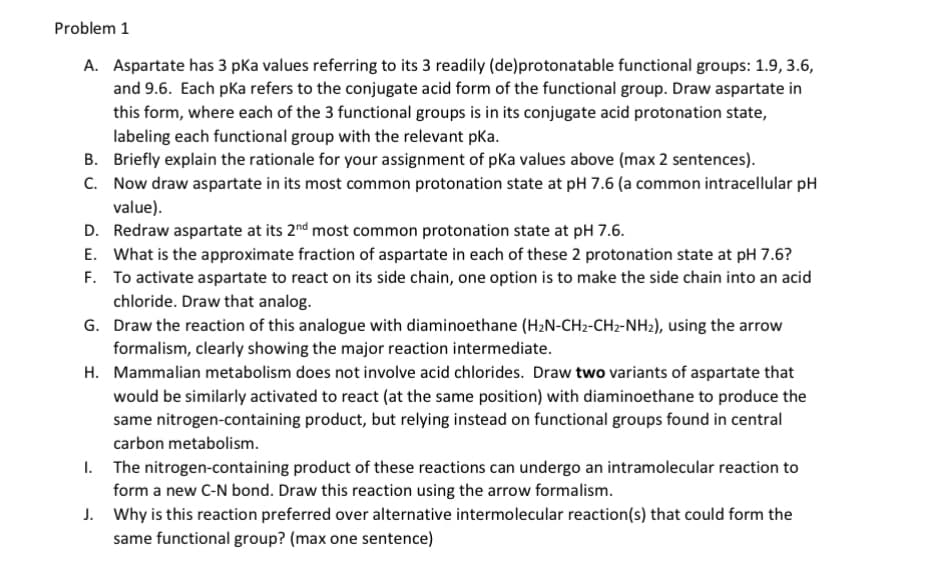Problem 1 A. Aspartate has 3 pka values referring to its 3 readily (de)protonatable functional groups: 1.9, 3.6, and 9.6. Each pKa refers to the conjugate acid form of the functional group. Draw aspartate in this form, where each of the 3 functional groups is in its conjugate acid protonation state, labeling each functional group with the relevant pka. B. Briefly explain the rationale for your assignment of pka values above (max 2 sentences). C. Now draw aspartate in its most common protonation state at pH 7.6 (a common intracellular pH value).
Ionic Equilibrium
Chemical equilibrium and ionic equilibrium are two major concepts in chemistry. Ionic equilibrium deals with the equilibrium involved in an ionization process while chemical equilibrium deals with the equilibrium during a chemical change. Ionic equilibrium is established between the ions and unionized species in a system. Understanding the concept of ionic equilibrium is very important to answer the questions related to certain chemical reactions in chemistry.
Arrhenius Acid
Arrhenius acid act as a good electrolyte as it dissociates to its respective ions in the aqueous solutions. Keeping it similar to the general acid properties, Arrhenius acid also neutralizes bases and turns litmus paper into red.
Bronsted Lowry Base In Inorganic Chemistry
Bronsted-Lowry base in inorganic chemistry is any chemical substance that can accept a proton from the other chemical substance it is reacting with.

Step by step
Solved in 2 steps with 3 images


